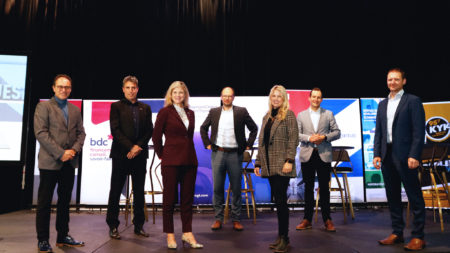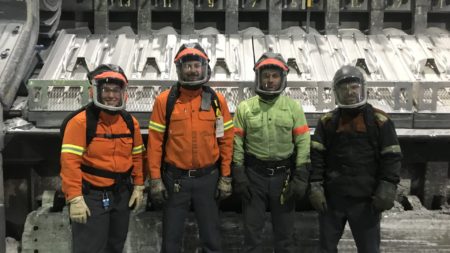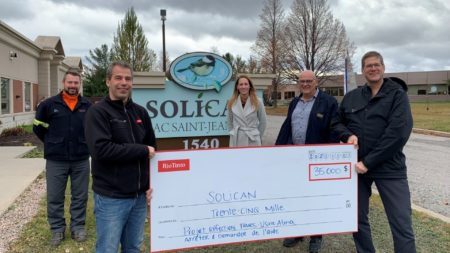The Saguenay Seaway: Sailing Towards a Responsible Future

On 14 October 2021 the Chambre de commerce et d’industrie Saguenay-Le Fjord held an economic forum on responsible economic development around the Saguenay seaway, entitled La voie maritime du Saguenay : source d’un développement économique responsable. Martin Lavoie, Director, Vaudreuil Works, Wharf Facilities, Railway Services, and Distribution Jonquière, was one of the panellists who highlighted the importance of the shipping industry for Rio Tinto, as well as for the development and responsible economic diversification of the region.
The Saguenay Fjord and its waterway have been key to our development throughout our history,” Lavoie said. “For nearly one hundred years, Wharf Facilities have been supplying quality raw materials to our regional facilities to produce low-carbon aluminium in Saguenay–Lac-St-Jean. With an eye to the future, we recently announced a $105 million investment to modernise our wharf facilities in Port-Alfred.”
The shipping industry in Saguenay–Lac-St-Jean
A study conducted by Raymond Chabot Grant Thornton confirms that marine transportation is the backbone of the region’s sustainable development and economic diversification. The shipping industry directly and indirectly supports more than 7,100 jobs throughout the entire territory, and its annual economic benefits, totalling $2.7 billion, reflect its substantial size.
In terms of environmental stewardship, the shipping industry is striving to be an example of responsible strategy for the world, as it provides a practical and efficient solution to considerably reduce greenhouse gas emissions generated by the transportation of goods and materials.
A cornerstone of the shipping industry
Rio Tinto is a cornerstone of this maritime ecosystem, with Wharf Facilities being an important transit point for operations and a key player in the production of the aluminium with the smallest carbon footprint in the world. The value of raw materials transhipped through the region’s marine facilities currently amounts to $750 million per year. In 2019, these raw materials were used to produce 1.26 million tonnes of aluminium and 1.52 million tonnes of alumina and specialty products (super-white hydrate, aluminium fluoride, anhydrite), supplying the majority of smelters in the region.
When asked about the environment and the fight against greenhouse gases, Lavoie also reiterated how important it was for Rio Tinto to remain a leader in responsible aluminium production. He said:
We are moving towards a responsible future, with specific decarbonisation targets and a genuine willingness to operate in a way that protects our employees and minimises our impact on the environment and on our host communities.”
Rio Tinto has reduced its total emissions by 46%, meeting its 2008-2020 targets. It continues to pursue ever-greener aluminium, and by 2050 aims to achieve zero emissions by reducing transportation-related emissions, among other things.
Wharf Facilities at a glance:
- Ninety-five years in operation
- More than 4,300 employees
- Approximately 125 ships unloaded per year
- Five million tonnes of raw materials unloaded per year


